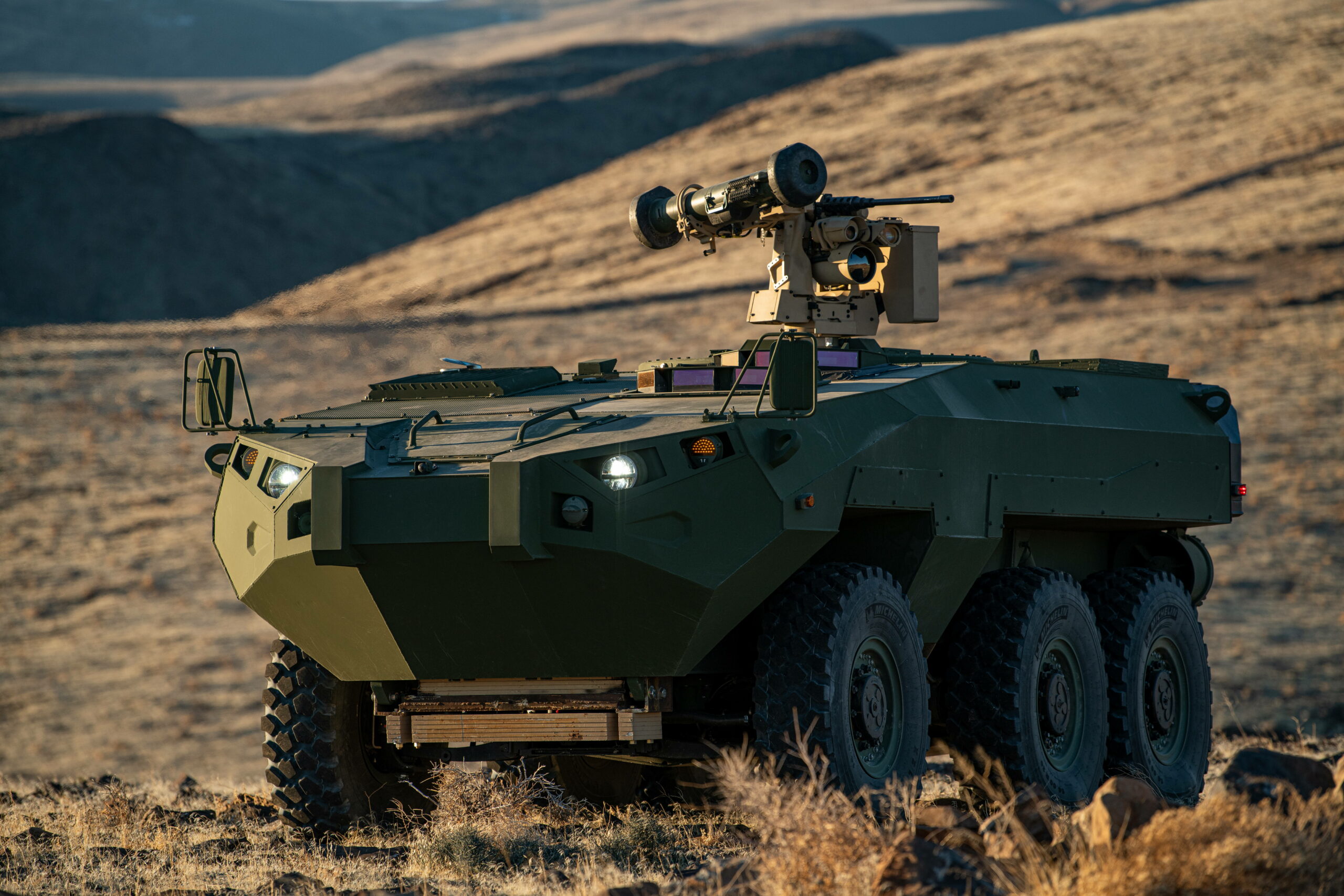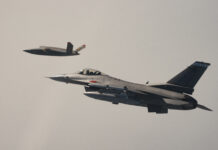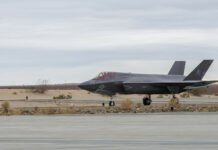In its search for a successor system to the approximately 600 LAV-25s (Light Armoured Vehicles) in use since the 1980s, the US Marine Corps (USMC) launched a competitive prototype phase for an Advanced Reconnaissance Vehicle (ARV) on 30 March.
The requirement is for a scalable system platform with an open architecture and growth potential. The ARV is to include a tethered Unmanned Aerial System with auto-launch and recovery capabilities alongside a robust battlefield management and communications systems. A Lockheed Martin STALKER UAS will be provided for the prototype. The maximum weight requirement is 18.5 tonnes and four vehicles are to be able to be transported simultaneously on a LCAC 100 ship-to-shore connector (SSC).
Textron Systems, manufacturer of the LCAC 100, presented its prototype COTTONMOUTH with integrated multi-spectrum sensors on 4 May. The 6×6 vehicle, equipped for mobility in the water with two jet nozzles, is operated by two people and offers transport space for five additional personnel. Situational awareness is supported by the “see-through” technology of Elbit’s IronVision system.
The USMC intends to award three contracts for ARV prototypes and then test and evaluate them. Two are to be selected for the Engineering and Manufacturing Development (EMD) phase scheduled to begin in 2024. Subsequent production of the approximately 500 vehicles is to take place over a five-year period.
As known so far, General Dynamics Land Systems has also submitted a bid for the prototype ARV. The potential competitor BAE Systems, which already produces the USMC’s Amphibious Combat Vehicle, has not yet confirmed a commitment in this regard.
Wolfgang Gelpke












